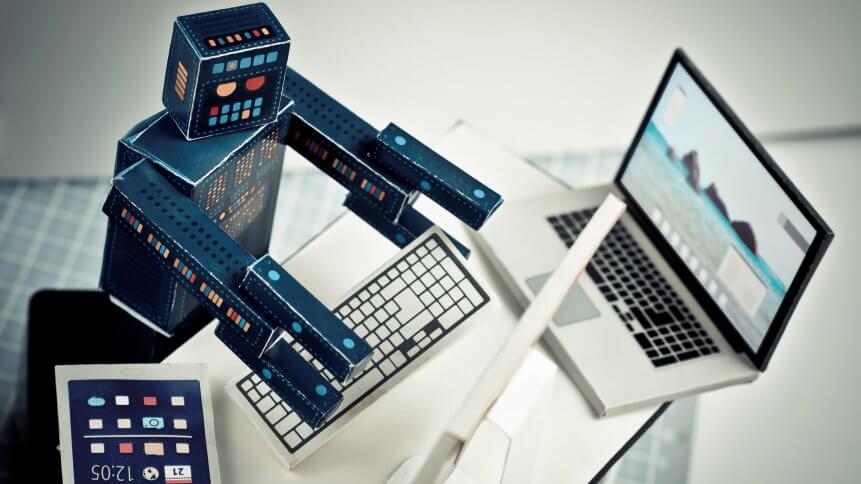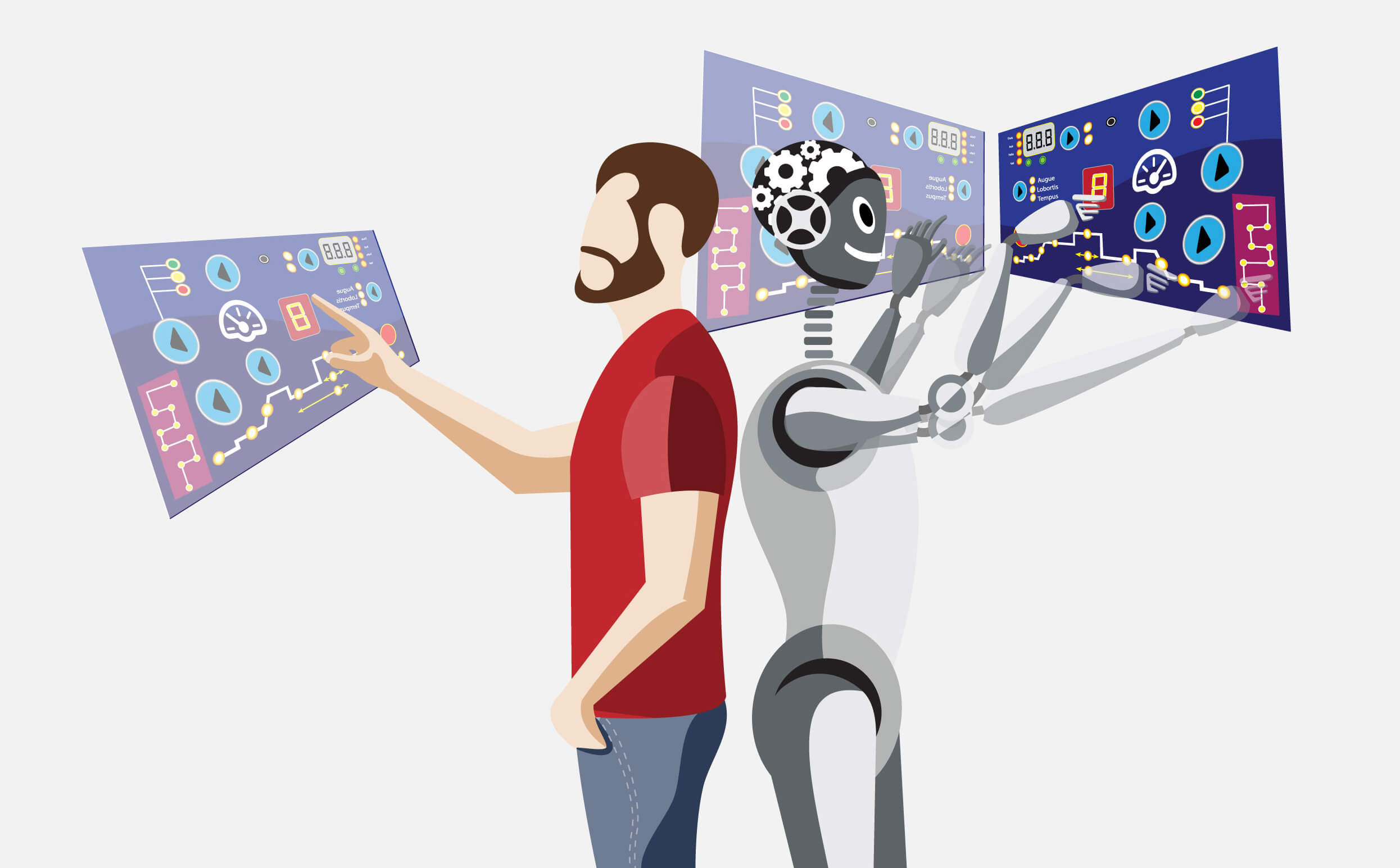
One of the greatest misnomers about RPA (robotic process automation) is that it’s all about robots. That’s just not the case – believe it or not, RPA, despite its name, is all about humans.
In its simplest deployment models, RPA can draw information from multiple sources and undertake manual tasks, typically moving data from place to place after it’s been added to, edited, treated or in some way altered. In this role, RPA is doing the work of humans – dull, mundane, repetitive work that not only gives workers a dull headache, but also increases the incidence of mistakes creeping in. Those tedious data entry roles are now on the wane, as basic form filling, validating data, providing information updates and a whole host of other tasks, are now being quickly accomplished by robotic processes.
So fast is this transformation taking place that the WEF (World Economic Forum) founder and executive chairman, Klaus Schwab, said of the so-called fourth industrial revolution: “The speed of current breakthroughs has no historical precedent. Moreover, it is disrupting almost every industry in every country. And the breadth and depth of these changes herald the transformation of entire systems of production, management, and governance.”
The McKinsey Global Institute (MGI) estimates that about half of all the activities people are paid for could potentially be automated, at least in part, by adapting current tech.
The place for a more in-depth discussion on the changing nature of human work roles is perhaps not here, but it’s worth considering the way that RPA can aid the human operators in an organization, complementing and improving on staff activity, rather than replacing paid roles with faceless robotic algorithms.
There are several areas where automation is having an impact. The first is in industry, where manufacturing, utilities and core services (such as power generation, mining, chemical refining) are seeing the most obvious visual changes. Factory floors of autonomous robots, automated assembly lines, and self-piloting transport systems are clear enough examples.

To swing over to the other visual extreme, across all industries robotic process automation in the back end, or server room, serves our purposes invisibly. Here robot algorithms work 24/7 to automate data processing, helping their human cohorts to achieve KPIs and improve the workings of the business.
At the consumer end of the equation, cognitive chatbots are gradually appearing more, taking over from human operators to undertake the more mundane tasks that previously, human operators (potentially on low hourly rates of pay) had to fulfil. In many cases, not only are repetitive, script-driven interactions now completed more accurately by ‘bots but in many cases, customers actually prefer interacting with the virtual helpers over the human alternatives.
Perhaps the most exciting area of automation at present is where a suite of RPA functions can aid human workers to achieve the aims and objectives of their organization better. Desktop RPA is an emerging field, and the creators of such solutions have realized that in many instances, deploying a 100 percent automated solution is either not feasible, nor desirable.
In a considerable number of instances, there’s just no substitute for the human touch – customer care functions, for example. It’s ironic that the personality type best deployed in care roles – outgoing, human-centric, empathetic – are the same types who respond worst to undertaking mundane, repetitive tasks, which are, unfortunately, a common aspect of those roles.
Deployment of robot ‘helpers’ at the desktop level, therefore forms a natural bridge between the best aspects of human activities – care, showing of interest, problem-solving – and the forté of robotic processes: unwearied diligence, 100 percent lack of forgetfulness, accurate and fast data retrieval, input and processing.
RPA in its various guises, from the factory floor to customer complaints, can provide a better experience for staff, partners, customers, and service users. Business policy changes can be instilled into algorithms to change the way human operators work seamlessly, and even provide training on new systems, or help onboard new staff. In traditional industries, new processes can be fed to machines to help prevent workplace accidents, or be used to timetable machine repair schedules according to the human operators’ work & vacation patterns.
There’s little need, therefore, to see RPA in all its guises as a threat to humans in the workplace, in a dystopian future where the robots take over and place us all on the human scrapheap. Instead, the future is more likely to be one where robots aid and help our very human nature, allowing us to do the things at which we excel.
At TechHQ, we’d like to highlight three suppliers of robotic process automation platforms, of which each has its own specialisms and use-cases. No one solution will fit every enterprise or be suitable for every organization. But we hope at least one of the following will empower the human workforce in your business or organization.
NICE
Global company NICE is unique in that its RPA platform offers intelligent and intuitive assisted automation (via its NEVA virtual attendant) together with unassisted back end automations. This combination, plus the company’s credo of human-centric RPA, sets it apart and makes it able to support more complex process and operational scenarios.
NICE overcomes the traditional stumbling block along the path to RPA discovery and deployment – identifying possible automation points – with its Automation Finder innovation. This is a home-grown, AI-infused RPA diagnostic tool that’s designed to pinpoint processes ripe for automation by utilizing desktop analytics and cognitive machine learning technology.
NEVA, the company’s dedicated desktop assistant (which helps in real-time by providing process guidance and automating tasks on behalf of the employee) aids human operators. Employees can ask NEVA to execute a task, perform calculations or display contextual process guidance as and when needed. In addition to changing the way processes are automated and optimized on the desktop, NEVA can trigger the unattended robotic workforce in the backend to execute additional operational processes without human intervention.
NEVA is an example of how NICE is breathing life into its vision, which it calls “Automation for the People”. The company’s ethos is that business success comes by bringing together man and machine in a collaboration between human employees and the robotic workforce. It’s this seamless two-way interaction that distinguishes NICE from its competition; you can read more about NICE here.
VERINT
Verint’s cloud-based RPA software that replaces the need for manual processing of specific tasks or multistep processes in a functional area or entire department.
On the employee’s desktop, the Verint Process Assistant provides guidance and a series of wizards overlaid on applications that show staff what to do. It can also prevent them from proceeding in some situations and performs work if pre-set criteria are met.
Part of the desktop-based solution offers a demonstration function that animates the necessary steps that need to be taken, which acts as a kind of real-time, virtualized, on-the-job trainer. This type of feature is particularly useful for those tasks less often performed, and therefore easily forgotten.
Verint’s guidance scripts can come with relevant explanatory and background information as processes progress, so rather than becoming roboticized in many ways themselves, employees know both what to do, but also why things need to be done the way they are.
As well as real-time staff training, business change management functions can set up any process alterations in the software, and guide staff as to the new methods to be employed, immediately. This not only avoids errors but gives a level of flexibility to processes that’s more responsive to business need.
AUREA

Source: Aurea
The Aurea CX Platform is an automation and support system specially designed to improve customer-facing environments. It comprises three facets: CX Processes, CX Messenger and CX Monitor.
CX Processes is used to map out both existing or conceived customer journeys to identify possible improvements and to allow the identification of pain-points or bottlenecks.
CX Messenger is a plug-and-play RPA implementation, which connects different systems via SOA, REST, SaaS, and proprietary APIs. The relatively simple GUI means that even obscure business-oriented software can be integrated into other systems, and the processes that take time simply automated to maximum efficiency effect.
CX Monitor functions as a tracker that keeps an eye on all systems integrated by Messenger, and monitors changes to structures.
There’s a higher tier to this offering called CX Monitor Enterprise. The business intelligence and data analytics aspect of the offering is particularly effective and, as a whole, the Aurea platform is seen as a critical change-driver for small to medium companies with a significant out-facing function.
Finally, it’s worth noting that Aurea Unlimited gives companies unlimited access to the whole gamut of Aurea solutions for one price – perfect for an organization with its mind set on expansion.
*Some of the companies featured on this editorial are commercial partners of TechHQ








